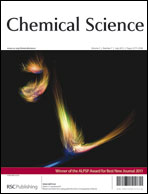With recent advances in stem cell therapies and oncological research, prolonged tracking of single cells in vivo is critical to understanding their unusual biology. To tag these cells, nanocrystal-based probes are highly desirable since their composition can be tailored for specific imaging techniques, such as magnetic resonance imaging or whole-body fluorescence imaging. Nevertheless, a robust strategy to incorporate nanocrystals to the cytosol of living cells for tracking schemes has been difficult to achieve. We report here a biomimetic approach to nanocrystal delivery, ideally suited for cell tracking schemes, using a unique class of core–shell colloidal polymer vectors decorated with both amine and guanidine functionalities. These materials exhibit unusual dual responsive character to both pH and temperature that can be leveraged to translocate nanocrystal/polymer assemblies to the cytosol in less than an hour. By avoiding prolonged exposure to the acidic microenvironment of late endosomes, the intact nanocrystals no longer pose a problem to cell health. Such a rapid trajectory for these mixed-component assemblies into live cells is unprecedented and should make practical a wider array of nanoparticle-based tracking schemes in biological systems than is currently possible.

You have access to this article
 Please wait while we load your content...
Something went wrong. Try again?
Please wait while we load your content...
Something went wrong. Try again?


 Please wait while we load your content...
Please wait while we load your content...